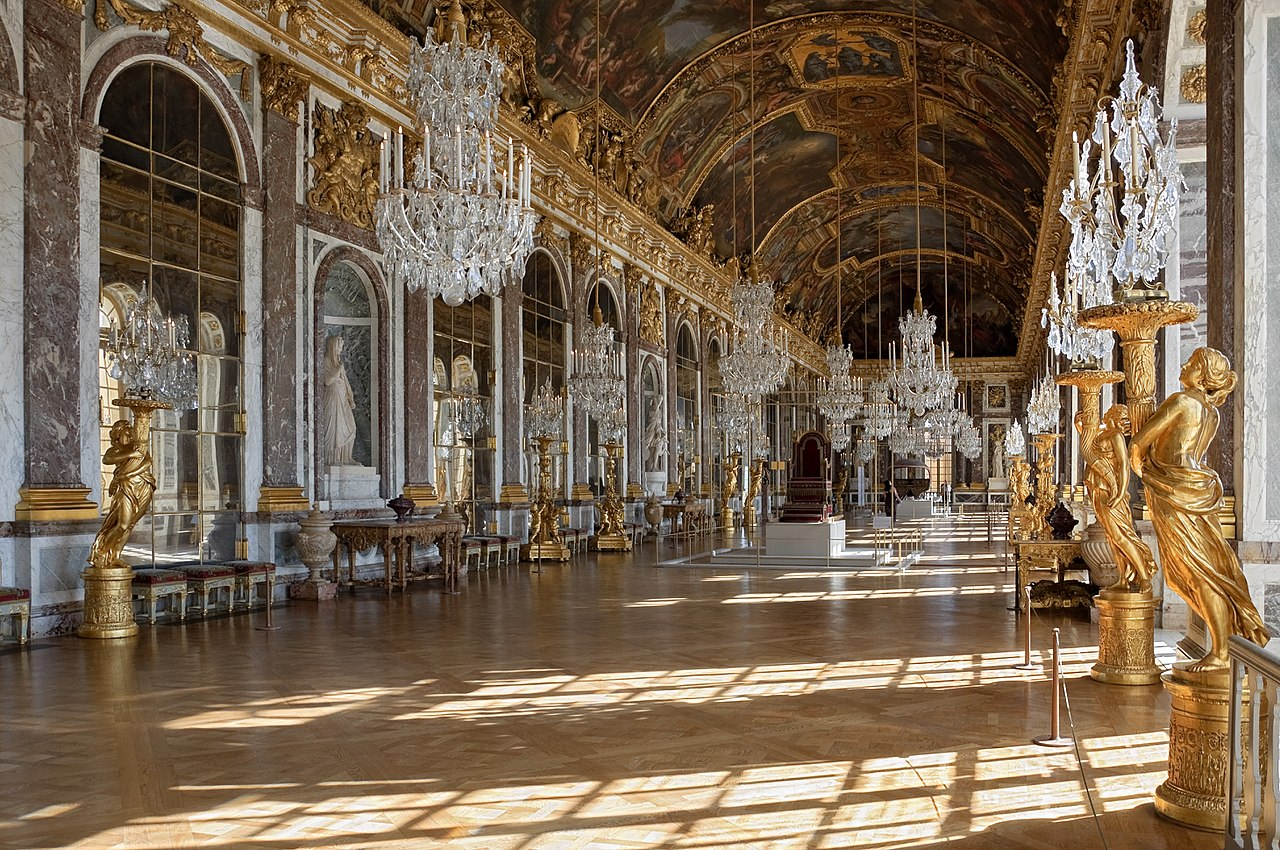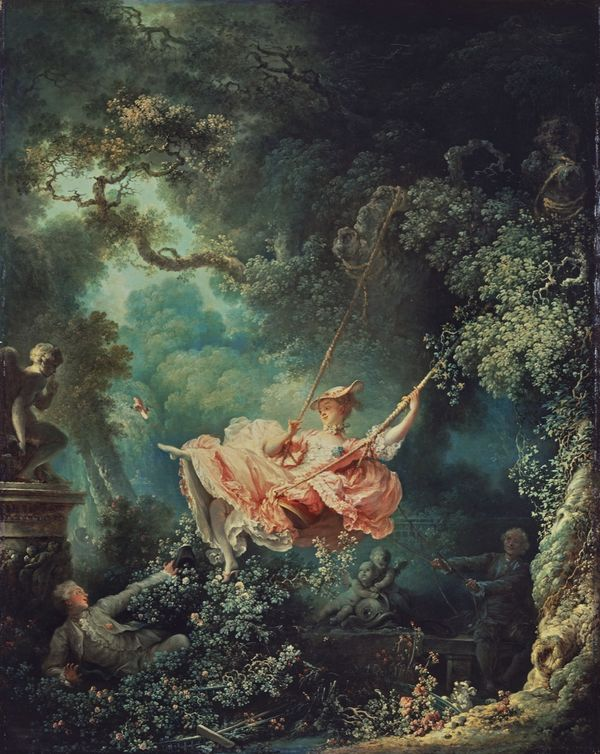Novala prefaces the novel with a brief explanation of the Rococo and Baroque periods. He states that Rococo refers to an era of elegant and sumptuous art that dominated France in the 18th century. While it did follow the Baroque period, the development of Rococo aesthetics wasn’t limited to France. According to Britannica, the Rococo art movement began in Paris and like a lot of ideas, it took foothold in other countries such as Germany, Austria, and Italy. A prime example is the Church of Vierzehnheiligen in Bad Staffelstein, Germany which still stands today.
| Church of Vierzehnheiligen |
Novala quickly states that the Baroque period lasted between “1715 to 1770 or so and possessed a stateliness and majesty based on Catholic beliefs”. The description is fairly accurate, but timelines are off. In fact, when it comes to social, political, and artistic movements, it can be quite difficult to put an exact date, so I think it’s better to recognize these things in a general time frame and its characteristics.
What is Baroque?
The Baroque art movement has its roots in the previous century, from Mannerism, an art style originated from 16th century Italy that was a response to the Renaissance movement. While Renaissance art focused on realism, Mannerism is characterized by exaggerated or elongated proportions, and unrealistic poses and perspectives. Baroque style essentially took these ideas from approximately the 1600s and ran with it for roughly 150 years (remember – ideas didn’t move as quickly as they do now). It’s a style defined by grandeur and expressiveness, excessive ornamentation, deep colors, contrast, and movement. Defining artists from the period include Caravaggio, Rubens, Diego Velazquez, Rembrandt, Vermeer, Gian Loreanzo Bernini, Giovanni Batissta Gauli, and Francisco de Zurbaran.| Example of a Baroque painting: Entombment of Christ (1601-3) - Caravaggio |
Baroque’s theatrical ability to highly stimulate the senses and inspire awe was appealing to those who held power in government and in the Catholic Church which was competing for membership with the austere Protestant Reformation. Many Catholic churches in this period commissioned Baroque practitioners to design and build religious buildings and art as a form of propaganda, and their endeavors were quite successful. Step into any Baroque styled cathedral and one can feel emotionally and physically dwarfed by the sheer size and dramatic use of light and gilding with the belief that they are in the grand presence of an all-knowing God and His Heavenly court.
| The São Francisco Church and Convent of Salvador, Brazil |
| Asamkirche - Munich, Germany |
Novala/Momoko describes Baroque as masculine, somber, solemn, serious, and boring, but this wasn’t always the case. As its popularity spread across the world (as Baroque architecture can be found in colonized countries), different countries developed their own visions of the Baroque aesthetic. One can certainly use those descriptors for early Baroque art and basilicas in Italy, but in places where the Protestant faith was more dominant, such as in England and the Netherlands, the Baroque style was comparatively minimalist and refined.
Although France was primarily Roman Catholic, French Baroque was respectfully its own aesthetic and is referred to by the French as Classicism. This look emphasizes geometry and precision, as seen in the Palace of Versailles.

Although France was primarily Roman Catholic, French Baroque was respectfully its own aesthetic and is referred to by the French as Classicism. This look emphasizes geometry and precision, as seen in the Palace of Versailles.
| Palace of Versailles and gallery |
The Palace of Versailles (which originally began as a “humble” hunting lodge) was intentionally built in the Baroque style between 1631 to 1634. King Louis XIV may not have expanded the chateau in the oppressively dramatic Italian or Spanish manner, but it still managed to convey his style of absolute rule so well that it draws and awes 10 million visitors a year!
What is Rococo?
Novala says that the term Rococo derived from the French word rocaille. This is true, but it doesn’t mean “misshapen pebble” - just pebbles. It refers to the stones and shells used to decorate the interiors of grottos and caves. Rococo refers to the type of decorative art popularized in the 18th century featuring curves, and shell-like, rock-like, and scroll motifs.| Example of Rococo scrollwork |
While Rococo arrived after the Baroque period, it has a much longer history than Novala/Momoko assumes, and there are many overlaps. Signs of Rococo art and design appeared as early as 1715 and its popularity lasted up into the late-1780s. Rococo is often referred to as Late-Baroque.
Once again, Novala gives the reader a slapdash explanation as to why Rococo came after the Baroque style, though understandingly since Kamikaze Girls isn’t a Western art history book. To quote: “...without giving it any deep thought, whatsoever, started using curves for no other reason than, hey, round is cuter than square! “The reality was that Rococo came about during the Age of Enlightenment where its primary focus was on secular, humanistic, and natural matters, instead of religious ones.
During this period, improvements in technology, education systems, and rise of global trade gave the aristocracy and a growing middle class the ability to question theological dogmas and embrace science and the natural world. The artistic sensibilities embraced by this newly wealthy class and the aristocracy are reflected in their homes as they commissioned artists and designers who utilized pastels, curves, asymmetry, scattered light, feelings of playfulness, mythology, and non-religious imagery, including symbols of beauty and courtship.
Once again, Novala gives the reader a slapdash explanation as to why Rococo came after the Baroque style, though understandingly since Kamikaze Girls isn’t a Western art history book. To quote: “...without giving it any deep thought, whatsoever, started using curves for no other reason than, hey, round is cuter than square! “The reality was that Rococo came about during the Age of Enlightenment where its primary focus was on secular, humanistic, and natural matters, instead of religious ones.
During this period, improvements in technology, education systems, and rise of global trade gave the aristocracy and a growing middle class the ability to question theological dogmas and embrace science and the natural world. The artistic sensibilities embraced by this newly wealthy class and the aristocracy are reflected in their homes as they commissioned artists and designers who utilized pastels, curves, asymmetry, scattered light, feelings of playfulness, mythology, and non-religious imagery, including symbols of beauty and courtship.
| Queen of the Lake - Birnau, Germany |
| Rohan Palace - Strasbourg, France |
There’s a brief mention of the artists Antoine Watteau and François Boucher, who were prolific during this era. Novala/Momoko expresses their disappointment that these artists were treated with more disdain as artists than they deserved among artistic and academic circles, which bears some truth. These artists in particular had commercial success, especially in the decorative arts. Their works, however, typically evoke mood rather than tell a story, and although the French Revolution was brewing in their time, they were not always making art that challenged or reflected the greater socio-political climate. For context, when King Louis XIV died, the French court largely left Versailles and returned to their homes in Paris (and understandingly so. The paranoid king forced many aristocrats to move to the hinterlands of Versailles while the palace was still being built). This return to the comforts of city life allowed aristocrats to pursue intimate activities as reflected in the art they purchased.
Novala/Momoko quotes the French philosopher and writer Denis Diderot who describes Boucher’s paintings as containing only “elegance, cloying sweetness, fantastic gallantry, facility, change, brilliance, made-up skin tones, and lewdness”. His critique on Boucher’s works is infamously contradictory, but it’s not without reason. For one, their works are inspired by the theatricality of commedia dell’arte, a form of Italian theatre based on colorful characters and improvisation which was quite popular during this period. Secondly, Boucher and Watteau’s financial successes are owed to their wealthy patrons. There’s nothing new about artists making their patron’s portraits look better than they do in person. Watteau was especially famous for embracing this form of theatre into his paintings, featuring playful subjects in fashionable attire of his time in a park-like setting. This anachronistic blend of nature and fantasy came to be known as fêtes galantes.

Perhaps the most famous piece of Rococo art: The Swing by Jean-Honoré Fragonard
Perhaps these artists didn’t create world changing works, but from a modern day perspective, we can thank artists like them for providing us invaluable examples of fashion from the period and a glimpse of what life might have been like for the patrons of the time.
If you’re interested in learning more about these artists, I highly suggest following these links to The Met’s archives:
Novala/Momoko quotes the French philosopher and writer Denis Diderot who describes Boucher’s paintings as containing only “elegance, cloying sweetness, fantastic gallantry, facility, change, brilliance, made-up skin tones, and lewdness”. His critique on Boucher’s works is infamously contradictory, but it’s not without reason. For one, their works are inspired by the theatricality of commedia dell’arte, a form of Italian theatre based on colorful characters and improvisation which was quite popular during this period. Secondly, Boucher and Watteau’s financial successes are owed to their wealthy patrons. There’s nothing new about artists making their patron’s portraits look better than they do in person. Watteau was especially famous for embracing this form of theatre into his paintings, featuring playful subjects in fashionable attire of his time in a park-like setting. This anachronistic blend of nature and fantasy came to be known as fêtes galantes.
Perhaps the most famous piece of Rococo art: The Swing by Jean-Honoré Fragonard
Perhaps these artists didn’t create world changing works, but from a modern day perspective, we can thank artists like them for providing us invaluable examples of fashion from the period and a glimpse of what life might have been like for the patrons of the time.
If you’re interested in learning more about these artists, I highly suggest following these links to The Met’s archives:
- François Boucher (1703-1770) https://www.metmuseum.org/toah/hd/bouc/hd_bouc.htm
- Jean-Antoine Watteau (1684-1721) https://www.metmuseum.org/toah/hd/watt/hd_watt.htm
- Fête Galantes https://www.nationalgallery.org.uk/paintings/glossary/f%C3%AAtes-galantes
- More on Rococo art https://www.artsy.net/article/artsy-editorial-10-artworks-defined-rococo-style
Thanks for reading!
Mocha

No comments:
Post a Comment